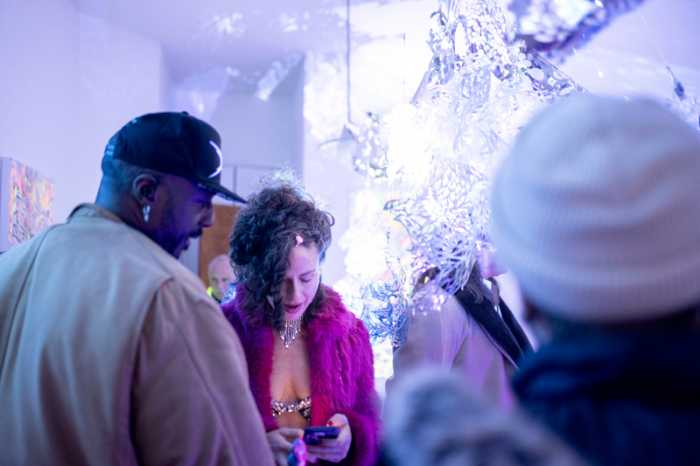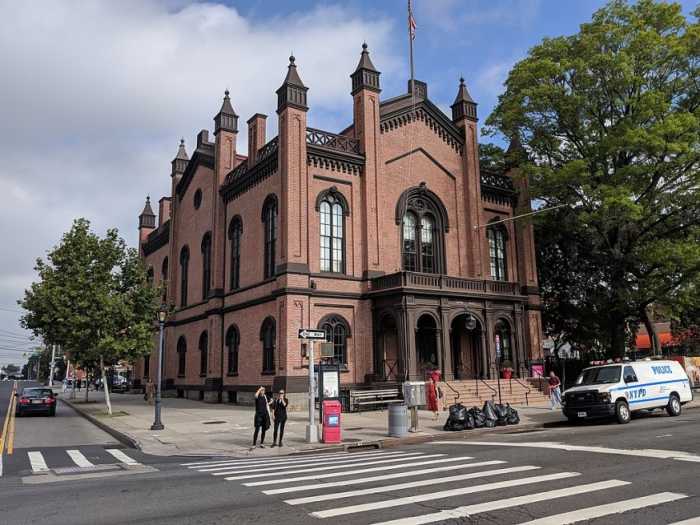Long Island City — and the entire art world — lost one of its own in March of this year. Arthur Hammer, LIC resident for nearly 40 years, had a passion for painting portraits that was rivaled only by his passion for life.
His daughter, Deirdre Hammer, fondly described him as being “the nutty artist guy in the community,” “a force to be reckoned with” and “the quintessential life of the party.” After being diagnosed with prostate cancer in the mid 1980s, he fought on for the next two decades before passing away at age 79.
On Thursday, October 25, the Diego Salazar Art Gallery in LIC will open a memorial exhibition for the late painter, featuring a number of his works.
Hammer grew up in Cleveland before heading east to attend the American Academy of Dramatic Arts in Manhattan with aspirations of working as an actor. After finishing his studies there, he met Jean Sharkey, an actress and singer whom he married in 1958. They had three children together: Deirdre and a set of twins, Maura and Joshua. It was his wife who bought him his first paints, brushes and canvases, which he used to paint casually in his early adulthood and then more frequently as he got older.
When Deirdre was five years old, her parents separated and her father left New York to pursue acting in Alaska and California. Eventually he made it back to New York in the early 1980s and reconnected with his children. Deirdre, who at this time estimated herself to be in her early 20s, moved into an apartment with him.
“It was weird because we didn’t have a normal father/daughter relationship by any account,” she said. “It’s not like he was there during my formative years, so we sort of became more of friends. It was interesting.”
Hammer never took a lesson in painting, opting instead to learn as he went along. To support his passion, he continued to find work as an actor before calling it quits on the trade entirely. He then worked as a cab driver and then as an art dealer, later coming to own his own gallery.
By the mid 1990s, he devoted himself to painting every day.
“Painting full time was becoming more and more of a necessity to me,” Hammer wrote in his application for a Pollock-Krasner Foundation grant, meant “to aid those individuals who have worked as professional artists over a significant period of time.” He received the grant in 2008.
“He loved to paint portraits,” Deirdre said. “The problem with portraits is they’re impossible to sell. I would always say, ‘Dad, why don’t you paint flowers? People buy flowers.’ He definitely painted what he wanted. He painted out of love and out of passion, those were all of his qualities.”
Deirdre went on to explain that portraits are not only difficult to sell, but to paint as well, particularly in her father’s style.
“Most people have a different version of what they look like, and an artist’s painting of you is distorted in whatever way,” she said. “My father wasn’t a realist at all.”
Elinore Schnurr, a fellow artist and friend of Hammer’s who will be the curator at his exhibit at the Diego Salazar Art Gallery later this month, described the late painter’s nonrealistic style as being very personal.
“Sometimes, although he catches the dynamic of a person, it doesn’t always entirely look just like them. They took on very unusual pictorial characteristics. The structure and design of the painting would change according to his mood.”
Despite portraits being a tough sell, Deirdre said people purchased her father’s works because of their quality and his outgoing personality.
“That’s usually how he sold his work,” she said. “Besides the fact that it was incredibly good, he was always so charming. He certainly lived life to the fullest. He certainly lived the life he wanted to live. He certainly was loved. He had a huge following of people that just absolutely adored him. My hope is to ultimately preserve his legacy. Any time I’m able to have a show and bring out his art and talk about him — that would be his favorite thing in the world.”




































